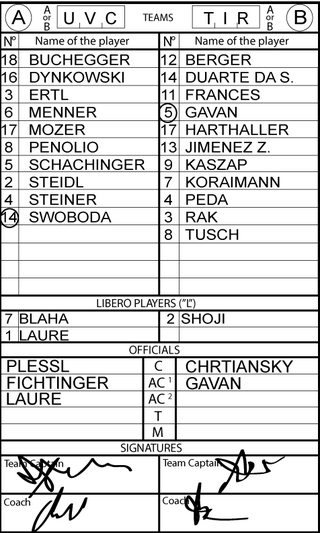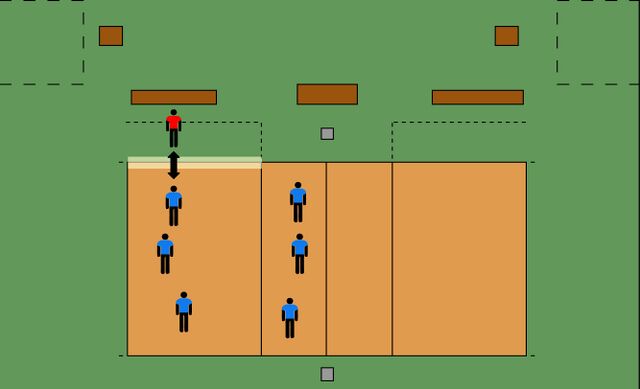6.12 Libero
Formal requirements
A team must consist of at least six and can have a maximum of 14 players. If there are seven players, no or a libero can be named. From eight to twelve players, a maximum of two liberos may be named. If there are 13 or 14 players, two liberos must be named. The libero(s) must be noted in the player list as well as in the column "Libero Players ("L")".
Permitted team compositions:
| 6 players | no libero |
| 7 players | no or one libero |
| 8 to 11 players | no, one or two liberos |
| 13 or 14 players | two liberos mandatory |
The predominant color of the libero jerseys must be clearly distinguishable from the jerseys of the rest of the team. The libero jerseys do not have to be the same color.
A libero may only be used on one of the backfield positions (5, 6, 1).
Replacement
A libero can be replaced by his regular replacement player or by the other libero.
There must be one completed rally between two replacements. If there is an incomplete rally, i.e. the rally has to be replayed, no replacement is possible, with the exception of an illness or injury.
Restrictions
- A libero can only replace a back-row player
- A libero is not allowed to serve
- A libero is not allowed to complete an attack completely higher than the top of the net
- A libero is not allowed to attempt a block
- After an overhand finger pass by a libero of his front zone, no player is allowed to complete an attack higher than the top of the net
Higher than the top of the net means, that the ball is completely higher than the top of the net at the moment the ball is hit by the attacker.
Re-designation
f the last remaining libero becomes unable to play (injury, illness, expulsion, disqualification, request by the coach), a new libero can be named. Any player who is not on the court (and is not the replacement player of the libero) can become the new libero and may replace the disabled libero.
Self-determined inability to play (request by the coach)
If the libero is on court, he must be replaced by his replacement player first. A re-designated libero can then only replace another player after a completed rally.
Under no circumstances can a libero participate in the match again, if a new libero has already been re-designated!
The new libero must play in a jersey that differs from the rest of the team in the basic color. If no jersey is available, a T-shirt, an overshirt, a bib, etc. can be used.
Procedure:
- Determine or acknowledge the inability to play
- Request for re-designation by the coach to the 2nd referee
- Record under Remarks

